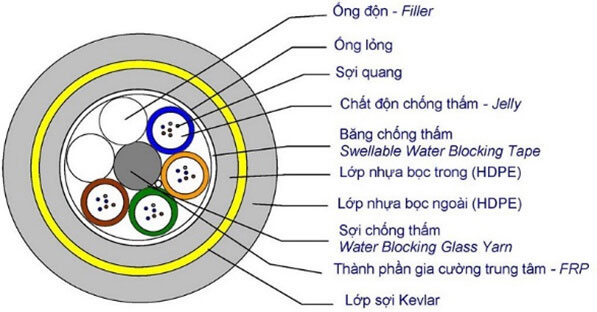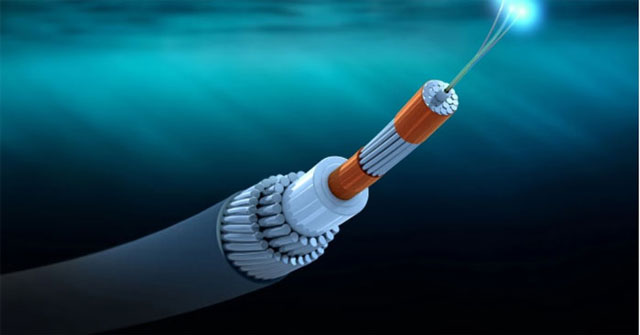Undersea fiber optic cables encountering issues is no longer a strange phenomenon for users. In fact, there are times when 2 or 3 cables experience problems simultaneously; while one cable is being repaired, another may break. This leads many users to wonder why undersea fiber optic cables keep breaking. Let’s explore the answer in the article below.
Why Do Undersea Fiber Optic Cables Keep Breaking?
In reality, undersea fiber optic cable failures are not uncommon, and certain areas experience a higher frequency of cable breaks than others.
To understand the causes, we first need to look at the structure of undersea fiber optic cables.

Structure of undersea fiber optic cable.
If you think that undersea fiber optic cables must be laid within a carefully protected system of conduits, you are mistaken. These cables can stretch for tens of thousands of kilometers, so they are designed to be reinforced near the shore and quite fragile in the deep sea.
In fact, undersea cables are often just laid directly on the sandy seabed. Near the shore, these cables are reinforced with braided steel and other protective layers. This is because shallow waters near the coast and heavy maritime activities increase the risk of damage from ship anchors or fishing nets snagging the cables.
Even though the near-shore cables are reinforced, they can still easily break if snagged and dragged by the anchor of a large cargo ship.

70% of undersea cable breaks are caused by ship anchors and human fishing activities. This explains why cable breaks only occur in certain water areas.
The water level in the East Sea of Vietnam (especially around Vung Tau, where the AAG cable lands) is relatively shallow. Meanwhile, maritime activity in this area is quite significant. Therefore, these waters are prone to undersea cable breaks due to ship anchors.
The remaining 30% of cable breaks can be attributed to the following causes:
- Intentional sabotage by individuals.
- Natural disasters such as earthquakes, underwater volcanoes, mudslides, and storms.
Many countries have attempted to address the frequent undersea cable breaks through various measures, but none have proven effective. The most effective solution currently remains to reconnect the broken cables.
While we cannot prevent incidents with undersea cables, we can mitigate their impact on Internet service quality by employing various transmission channels, avoiding congestion on 1 or 2 major channels, and not exhausting all available bandwidth before waiting for cable repairs. Instead, we should aim to increase the bandwidth-to-connection capacity ratio.
Discrepancies in the Number of Undersea Fiber Optic Cables
There is a significant disparity in the number of undersea fiber optic cables among countries worldwide. Developed nations have extensive undersea cable systems, such as the United States (91 cables), the United Kingdom (54), and Japan (26). In contrast, many other countries have only one cable to connect to the Internet, or two if they are fortunate.
According to TechRadar Pro statistics from August 2020, 19 countries, accounting for 10% of nations globally, are supported by only a single undersea fiber optic cable. This includes populous countries like Azerbaijan, Kazakhstan, and Sierra Leone.
There are 11 countries worldwide with a total of nearly 450 million users relying on two undersea fiber optic cables.
In these countries, if an incident occurs, Internet connectivity will be disrupted.
Vietnam has 7 undersea cables, serving a population of over 97 million, with more than 68 million Internet users. This means an average of 14 million people per cable, which is relatively low compared to other countries in the region and around the world.
For comparison, Thailand has 10 cables for a population of 69.8 million, Malaysia has 22 cables for 32.3 million people, and Singapore has 30 cables for 5.85 million residents.
The 7 cables connecting to Vietnam include SMW3, AAG, IA, APG, AAE-1, SJC2, and ADC. Among these, the SMW3 cable has been operational since 1999 and is due for decommissioning, while the AAG and IA cables have been in service since 2009 for 12 years. On average, Vietnam’s undersea cables experience breaks 10 times a year over the past 5 years.


















































